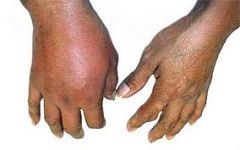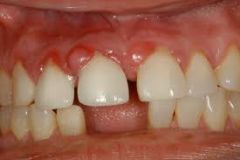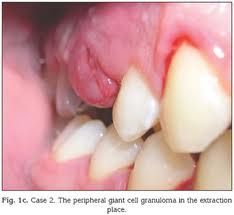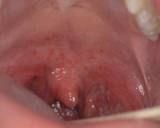![]()
![]()
![]()
Use LEFT and RIGHT arrow keys to navigate between flashcards;
Use UP and DOWN arrow keys to flip the card;
H to show hint;
A reads text to speech;
43 Cards in this Set
- Front
- Back

What are the 3 phases of the acute inflamation process?
|
1) Initiation 2) Amplification 3) Termination
|
|
|
What does the Initiation phase entail or include?
|
Vasoconstriction and then vasodilation,
Plasma fluid (exudate), Marginization and emigration of leukocytes |
|
|
What is another name for Marginization and what does it mean?
|
Pavementation
The movement toward the endothelial cells. |
|
|
What makes up the Amplification phase?
|
1) Opsinization: Enables leukocytes to distroy and remove resistant organisms at the sight of injury.
2) Phagocytosis: The ingestion of foreign material. |
|
|
What makes up the Termination phase?
|
Removal of the foreign material and debris
|
|
|
What are the Cardinal signs of inflamation?
|
Redness,
Heat, Swelling, Pain & Loss of Function |
|
|
Which cells release Histamine?
Are they granular or agranular? |
Mast Cells.
They are granular. Histamine is a cell mediator. |
|
|
What is a complement system?
|
A series of reactions between plasma proteins.
|
|
|
How do these proteins get activated?
|
During the inflammation response.
|
|
|
What is MAC?
|
Membrane Attack Complex.
It's a substance that punches a whole into the cell membrane of microbes being targeted for destruction by the immune system. |
|
|
What type of system is Opinization a part of?
|
A Complement System.
|
|
|
What are Opsonins?
|
It’s the attractant for Opsinization.
Bacteria is "laced" with it…like sugar on a vitamin. |
|
|
In a tooth absess what is a negative side effect of Neutrophils?
|
If they don't do a good job of cleaning out the bacteria they die and their enzymes will disolve the bone. Bacteria will be left at the site.
|
|
|
What is a fistula?
|
A drainage tract (pathway) at the surface.
(They are formed from Neutrophil enzymes) |
|
|
What type of cell has the biggest role in **Chronic** Inflmation?
|
Macrophages…when they come to play tissue gets hurt.
** Remember this is in Chronic Inflammation ** |
|
|
What do these macrophages secrete?
|
Lysosomal Enzymes
(very powerful and often "eat" more than they should). |
|
|
How is Chronic Inflammation resolved?
|
When the "agents" are removed or destroyed.
The body will eventually "kick" out a tooth, like we remove a rock in our shoe if the bacteria can't be "beaten back". |
|
|
When does repair and wound healing begin?
What cells begin this process? |
Immediately
Leukocytes & Fibroblasts |
|
|
What is the framework of healing and repair?
|
Granulation tissue
|
|
|
In epithelization, what happens if the cells slide down and form a basement membrane?
|
A scar can result…possibly a keloid.
|
|
|
What are the 3 phases of Wound Healing?
|
1) Inflammatory
2) Proliferative 3) Epithelialization/Remodeling |
|
|
What are the 2 types of fibruous repair?
|
Primary Intention & Secondary Intention.
|
|
|
When is Primary Intention repair utilized?
What is involved? |
Where there are clean margins like a surgeon makes.
Can involve sitches. There is a short distance for cells to travel and the scaring is minimal. |
|
|
When is Secondary Intention repair utilized?
|
When there is a large wound with frayed edges.
Repair starts at the base and a scar will develop. |
|
|
If someone has a low WBC count, what is the person most likely to encounter?
|
Secondary Infections…there aren't enough WBC's to fight invaders.
|
|
|
What factors affect wound healing?
|
1) The amount of vascularity (the more vascular the faster it heals)
2) Infections 3) Systemic Factors (Supressed immune systems, diabetes, Auto-immune system). |
|
|
What is the importance of a blood clot?
|
It sets the stage for repair. Has WBC's to fight infection.
It has collagen, fibrinogen..the scaffolding to build on. |
|
|
What is another name for dry socket?
|
Alveolus Osteolitis
|
|
|
When would you likely see a Pyogenic Granuloma?
|

Pregnant women, Menopausal women, hormonal teens. The hormones are changing at these times of life. It can also result from debris..popcorn shelling.
|
|
|
What is the most common site for a Pyogenic granuloma?
|
The gingiva.
|
|
|
What would be the TX for a pyogenic granuloma?
|
Delivery of the baby, possibly surgery if the lesion is very large. Do continue to scale/floss around it but understand it will bleed.
|
|
|
What does DD stand for?
|
Differential Diagnosis
|
|
|
What are some possible DD's for pyogenic granuloma?
|
Fibroma, Neoplasm.
|
|
|
What is a peripherial giant cell granuloma?
|

It’s a hyperplastic response to tissue injury.
|
|
|
What does a peripherial gian cell granuloma look like?
|
Similar to a pyogenic granuloma but has a deeper bluish-purple hue. It can bleed and be ulcerative.
|
|
|
What type of bone might be involved with a peripherial giant cell granuloma?
|
Alveolar Bone.
|
|
|
What are some possible DD's for peripherial giant cell granuloma?
|
Pyogenic granuloma, Neoplasm.
|
|
|
What causes Petachiae (Pa Tea Key aay), Purpura & Ecchymoses?
|

Hemorrhages (possibly from blood disorders) and Trauma related injuries.
|
|
|
Why won't these lesions blanche?
|
Because they aren't vascular lesions.
|
|
|
What are the approximate sizes of each of these lesions?
|
Petechia: 1-2mm, Purpura: < 1cm Ecchymoses: >1cm
|
|
|
What are the DD for these?
|
Platelet disease, Hemorrhagic disease, trauma, bone marrow disorders, bulemia and possibly fellatio. (Per Hoffers notes)
|
|
|
What is another name for Emigration?
What actually is it? |
Transmigration
When the WBC's squeeze through the gaps inbetween the cells in the vessel wall. They are tying to get to the "infection" and fight bacteria. |
|
|
What are PMN's and why are they important?
|
Polymorphonuclear Neutrophils
They are the most active granulocyte in the inflammatory process. |

